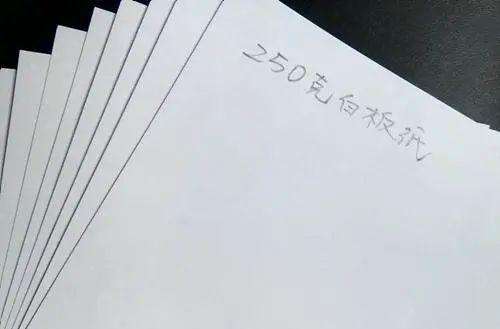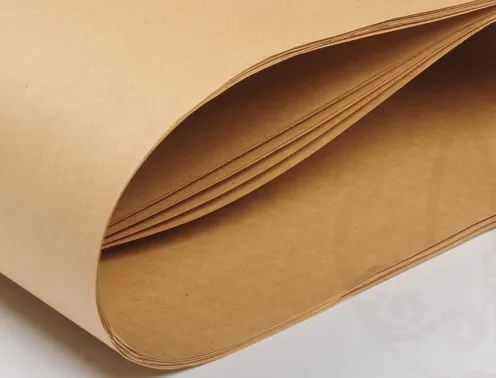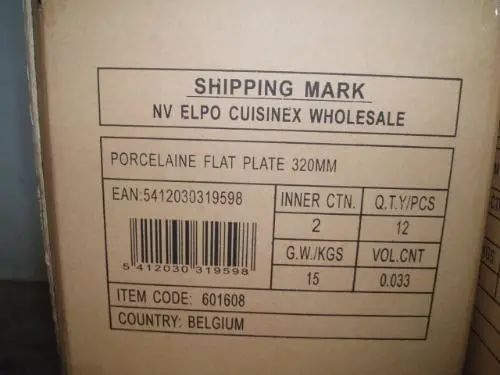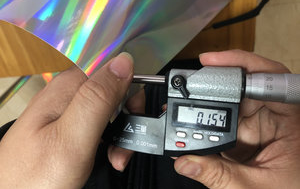Paper, Wikipedia defines it as a non-woven material made of plant fibers that can be folded at will and used for writing.

The history of paper is a history of human civilization. From the emergence of paper in the Western Han Dynasty to Cai Lun's improved papermaking technology in the Eastern Han Dynasty, and now, paper is no longer just a carrier for writing, but can also be used for other purposes such as printing, packaging, industry, and daily life.
01 Scope of application
Applicable products include: cultural paper, industrial and agricultural technical paper, packaging paper and household paper.
my country's imported paper mainly includes cultural paper (newsprint, coated paper, offset paper, writing paper) and packaging paper (kraft paper, white board paper, corrugated base paper, white cardboard, cellophane, etc.).
02 Inspection Key Points
Appearance
Focus: Appearance
Smooth, clean, etc.
The appearance of paper is an important factor in determining paper quality. It not only affects the beauty of the paper, but some appearance defects will also affect the use of the paper.
The appearance quality inspection of paper mainly uses light inspection, flat light inspection, squint inspection and hand inspection. The paper surface is required to be smooth and clean, and no folds, wrinkles, damage, hard blocks, light-transmitting spots, fish scale spots, color differences, various spots and obvious felt marks are allowed.
Note: The appearance quality inspection of imported paper is carried out in accordance with ZBY32033-90.
Physical properties
Focus: by classification
Different papers have different requirements
Newsprint: Newsprint requires soft and compressible paper, and the paper surface should be highly absorbent. To ensure that the printing ink can dry quickly during the printing process. The paper is required to be smooth on both sides, consistent in thickness, with good opacity, no lint or smear during printing, clear patterns, and no perspective defects. The roll paper requires consistent tightness at both ends of the roll, few joints, and good tensile strength to adapt to the printing requirements of high-speed rotary printing machines.

Quality requirements for coated paper: smoothness. The paper surface must be very smooth so that it can be in complete contact with the surface of the screen copper plate during printing, thereby obtaining a delicate and clear fine line pattern with a realistic shape and pleasing brilliance.
White board paper: White board paper generally requires a tight texture, smooth surface, consistent thickness, lint-free paper surface, good absorbency and small expansion rate to adapt to the requirements of multi-color overprinting. In order to meet the requirements of box making, whiteboard paper should have the characteristics of high stiffness and strong folding resistance.

Kraft paper: Kraft paper is a cardboard specially used for product packaging, so the texture of the paper must be tough, with high bursting strength, ring crush strength and tearing strength. In addition, it should have high water resistance so that during ocean transportation or cold storage, the strength will not be significantly reduced due to large amounts of moisture absorption, resulting in damage to the carton. The kraft paper that needs to be used for printing should also have a certain smoothness.

Corrugated base paper: Corrugated base paper requires good fiber bonding strength, smooth paper surface, and high tightness and stiffness. A certain degree of elasticity is required to maintain the shock-proof and pressure-resistant capabilities of the cartons made. Therefore, bursting strength and ring crush strength (or flat crush strength) are the main indicators reflecting the strength of corrugated base paper. In addition, the moisture index must also be controlled. If the moisture content is too small, the paper will be brittle and may break during corrugate processing. Excessive moisture will cause difficulties in processing. Generally, the moisture content should be around 10%.
Cellophane: Cellophane is transparent in color, bright in surface, uniform in thickness, soft and stretchable. It will swell and become softer after being immersed in water, and will naturally shrink after drying. It has high water absorption and is prone to wrinkles and even stickiness when exposed to moisture. In addition, due to the parallel arrangement of cellulose microcrystals in the longitudinal direction, the longitudinal strength of the paper is large and the transverse direction is small. If there are cracks, it will break under minimal force. Cellophane is airtight, oil-tight and water-tight.
Offset printing paper: Offset paper is used for multi-color overprinting. In addition to good whiteness and less dust, it also has high requirements for the paper's tightness, tensile strength, and folding resistance. During printing, the surface of the paper does not shed lint, powder, or print-through. The requirements are the same as those for coated paper.
03Defect description and judgment
| Sales packaging
Focus: packaging
Packing
Defects and judgment criteria related to paper product sales packaging are as follows:
| Defect description | Critical | Major | Minor |
| Improper product packaging | / | * | / |
| Labeling/Annotation/Print

Focus: labels, printing
Target sales packaging and products
| Defect description | Critical | Major | Minor |
| Products marketed in Europe and the United States: No ingredient information | * | / | / |
| Products marketed in the United States: No country of origin information | * | / | / |
| Products marketed in the United States: No manufacturer name/registration number | * | / | / |
| Production processes
Focus: Is it qualified?
Damaged paper, etc.
Defects and judgment criteria related to the production process are as follows:
| Defect description | Critical | Major | Minor |
| Damaged paper, etc. | / | * | / |
| spot | / | * | * |
| holes/holes | / | * | / |
| pleats/wrinkles | / | * | * |
| Break the bank | / | * | / |
| gap | / | * | / |
| dog-eared | / | * | * |
| Dirty | / | * | * |
| seersucker | / | * | * |
| Pulp blocks and other hard blocks | / | * | * |
| Post-press product inspection
Focus: Post-press products
Spots, wrinkles, etc.
Defects and judgment criteria related to post-printing products are as follows:
| Defect description | Critical | Major | Minor |
| piebald | / | * | * |
| Wrinkles | / | * | * |
| Chemical oil and water | / | * | * |
| Broken pages | * | / | / |
| Few pages | * | / | / |
Exterior
Focus: Appearance
Felt marks, etc.
Appearance-related defects and judgment criteria are as follows:
| Defect description | Critical | Major | Minor |
| felt marks | / | * | * |
| Roll shadow marks | / | * | * |
| gloss streaks | / | * | * |
04 on-site test
During the inspection process of paper products, the following on-site tests are required:
| Product weight inspection
Focus: weight inspection
Is the weight sufficient?
Test quantity: at least 3 samples for each style.
Inspection requirements:
Weigh products and record actual data;
Check against the weight requirements provided or the weight information and tolerances on the product packaging material.
| Paper thickness check

Focus: Thickness
does it reach the requirement
Test quantity: at least 3 samples for each style.

Inspection requirements:
Conduct product thickness measurements and record actual data;
Check against thickness requirements provided or thickness information and tolerances on product packaging materials.
Post time: Feb-23-2024





